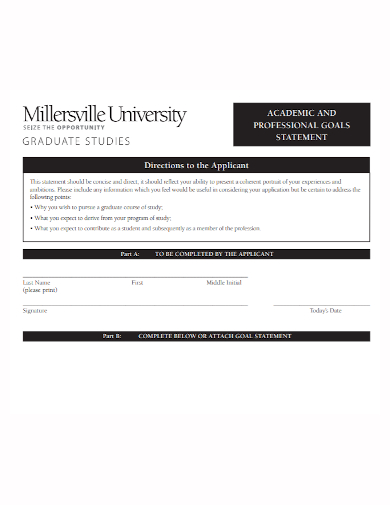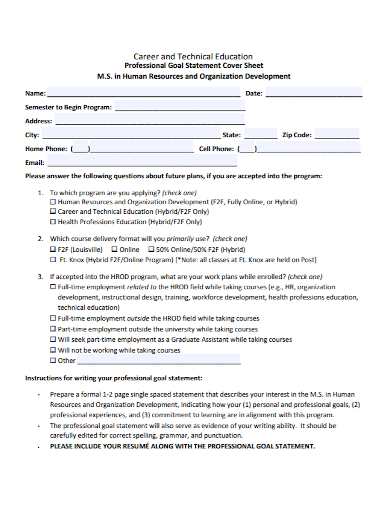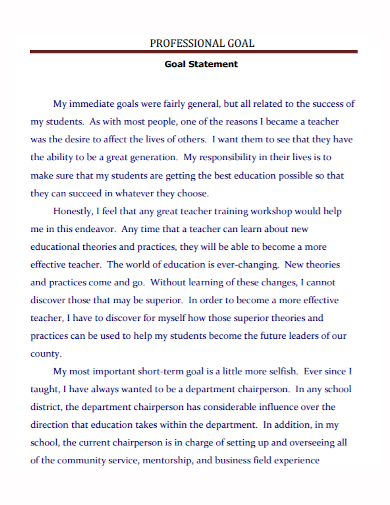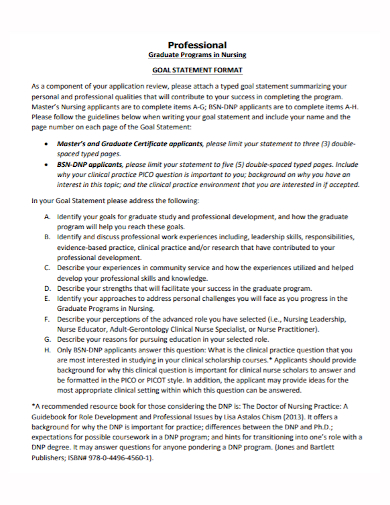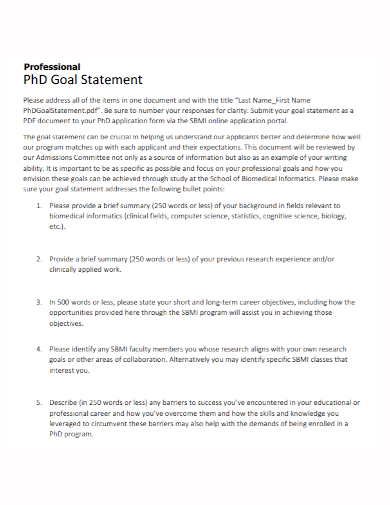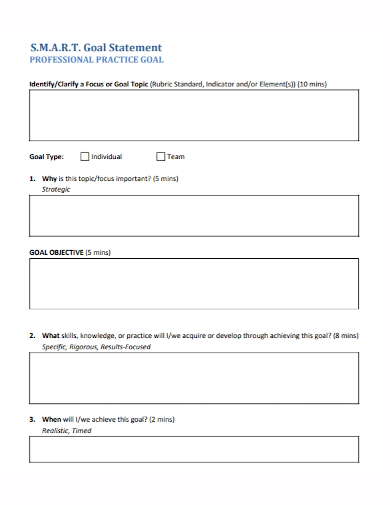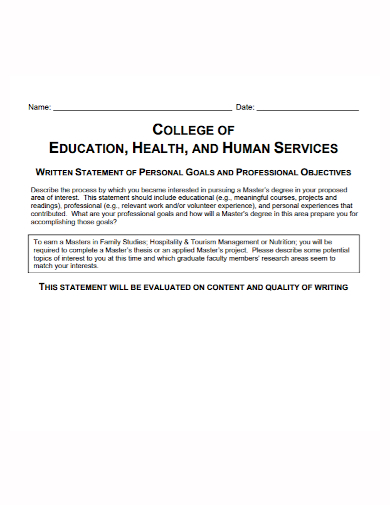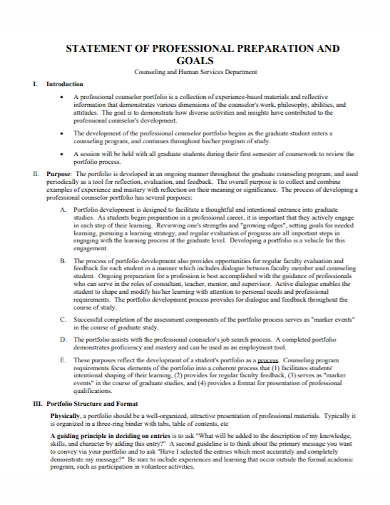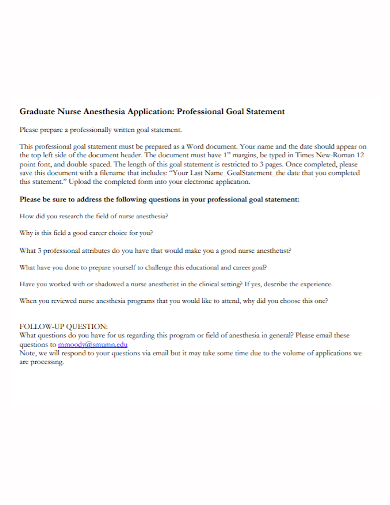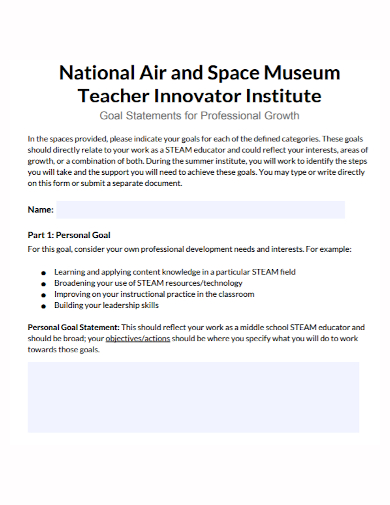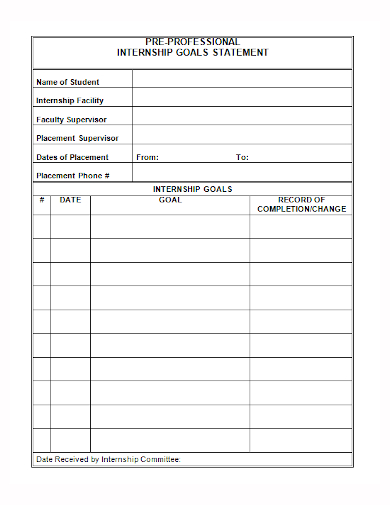Most people want to have good careers that they want to pursue to learn new skills and abilities, feel self-fulfilled, and be financially stable in the long run. However, the way to get there might be more complicated compared to knowing what career the person wants to pursue. This is a problem for some who are stuck in a job that they don’t like since they haven’t figured out how they want to pursue the career they want to achieve. One of the things that one should do, especially for young professionals who are just starting, is to create a professional goal statement where they can write down where they want their career to head to. This statement can also be included in a resume or curriculum vitae. If you want to know how to make a professional goal statement, read the article below.
10+ Professional Goal Statement Samples
1. Academic Professional Goal Statement
2. Professional Career Goal Statement
3. Professional Goal Statement
4. Professional Program Goal Statement
5. Professional PhD Goal Statement
6. Professional Smart Goal Statement
7. Professional Personal Goal Statement
8. Professional Preparation Goal Statement
9. Graduate Nurse Professional Goal Statement
10. Professional Growth Goal Statement
11. Professional Internship Goal Statement
What is a Professional Goal Statement?
A professional goal statement or also known as a career goals statement, personal statement, or a statement of purpose, is a plan of where you want to achieve in your professional career in the long run. Furthermore, the statement also shows your commitment to your goals.
How to Write a Professional Goal Statement
1. Know What Motivates You
Before settling down to write your goal statement on a piece of paper or type it on a computer, you need to be aware of yourself. Know your passion, your likes and dislikes, the values you follow, and the things that motivate you. Knowing these characteristics helps you focus on what career path you want to achieve and know how to achieve it. If you’re still not sure, do some research, interview professionals related to the career path you’ve chosen, and try out new experiences in different industries to know what career path you like to pursue.
2. Determine the Specific Career Path You Want to Take
So you’ve determined all the factors discussed above and you already decided which industry you want to delve into, it’s time to know which specific job that you want to do wholeheartedly. You can do a job search both on the internet or visit some companies to discover any hirings of jobs and to familiarize yourself in different job titles and the industry you’re pursuing. This will help you be aware of the specific requirements the job is looking for so you will know whether this career is the right fit for you. It will help you write a more specific career goal which will let you know what particular career do you want to pursue.
3. Do Some Reflecting
Now that you have all the data you need to pursue a specific career goal, it’s time to ask yourself whether you see yourself loving the career path you want to take. After all, being satisfied in your job matters more than just having a huge salary since you will be spending most of your time doing it so it matters that you love what you’re doing. Ask questions to yourself such as:
- Where do you want to be in a few years in your career?
- What kind of job do you need?
- How will your personal and career goals align and differ from each other?
- How can you improve your skills relating to the career you want to pursue?
- Are you engaged in your work?
- How does your work relate to the quality of life you aspire to have?
These questions may be hard to answer right away so take your time in reflecting on these. Ask help from your family, friends, or mentor to guide you.
4. Create A Goal
If you’ve answered the hard-hitting questions above, it’s time to focus now on creating a goal that will become your statement. Remember to make use of the SMART (specific, measurable, achievable, relevant, and time-bound) format goal to create an efficient goal that you can easily follow and accomplish.
5. Make an Action Plan
Now that you have your goal statement, write some action steps to achieve that goal. You can create an action plan to organize the steps you’re about to take while giving you a guide on what resources do you need and how long does the action complete to achieve your goal.
FAQs
What are the benefits of making a professional goal statement?
There are a lot of benefits to creating a professional goal statement. Some of these benefits are:
- It serves as a motivating factor in your success,
- Gives you the reason to be accountable for your professional actions, and
- It guides you to your career advancement
What are some common professional goals?
Some common and generalized professional goals that most people have are:
- Increase professional knowledge and training
- Increase salary rate
- Increase more connections and establish stronger professional relationships
- Have new experiences
- Attain a leadership role
Once you’ve written your professional goal statement, try to revisit it every few months to help you reevaluate the steps you’ve undertaken, determine some aspects, and analyze on which part you’re failing. Adjust your action plan if necessary. You must be willing to follow and adapt all those processes if you want to pursue and accomplish your goal. Download our free sample templates above to guide you on making a professional goal statement.
Related Posts
FREE 10+ Scholarship Statement of Purpose Samples in PDF | DOC
FREE 10+ Engineering Problem Statement Samples [ Software, Mechanical, Civil ]
FREE 30+ Information Statement Samples in PDF | MS Word
FREE 50+ Policy Statement Samples in MS Word | Google Docs | PDF
FREE 50+ Summary Statement Samples in PDF | MS Word
FREE 10+ Nursing School Personal Statement in PDF
FREE 9+ Mortgage Statement Samples and Templates in PDF
FREE 10+ Independent Subcontractor Statement Samples in MS Word | Google Docs | Apple Pages | PDF
FREE 10+ Trust Distribution Statement Samples in PDF
FREE 14+ Compliance Statement Samples & Templates in PDF | MS Word
FREE 10+ Extension Impact Statement Samples in PDF | DOC
FREE 10+ Bank Reconciliation Statement Samples and Templates in PDF | MS Word
FREE 10+ Diversity Mission Statement Samples in MS Word | PDF
FREE 10+ Architecture Statement of Purpose Samples [ Sustainable, Graduate, Master ]
FREE 13+ Project Scope Statement Samples in PDF | MS Word

